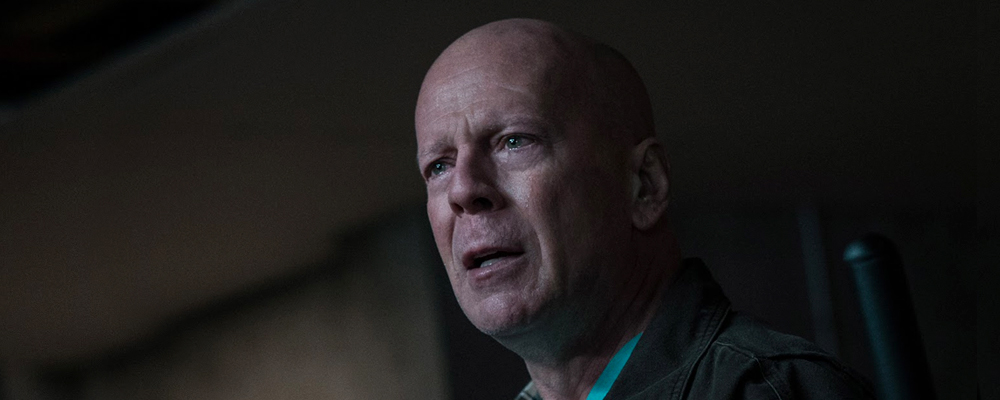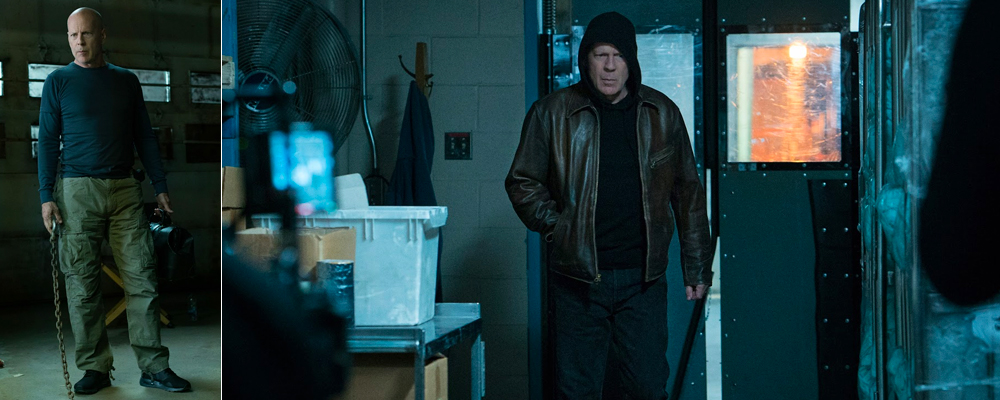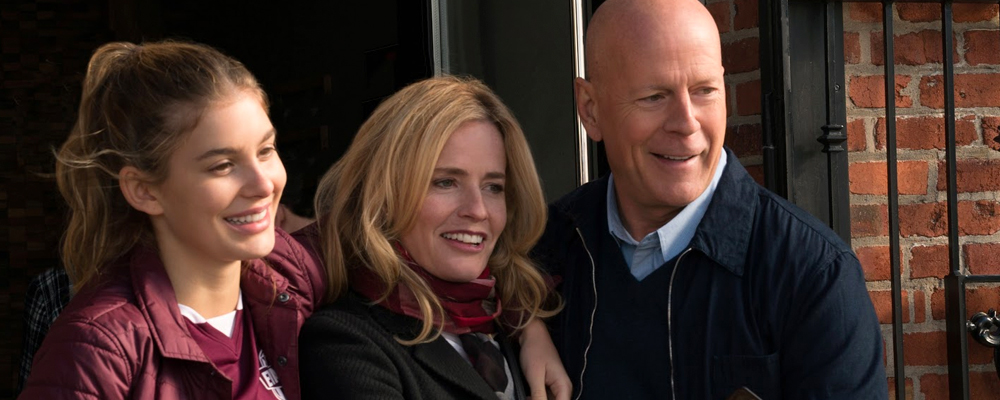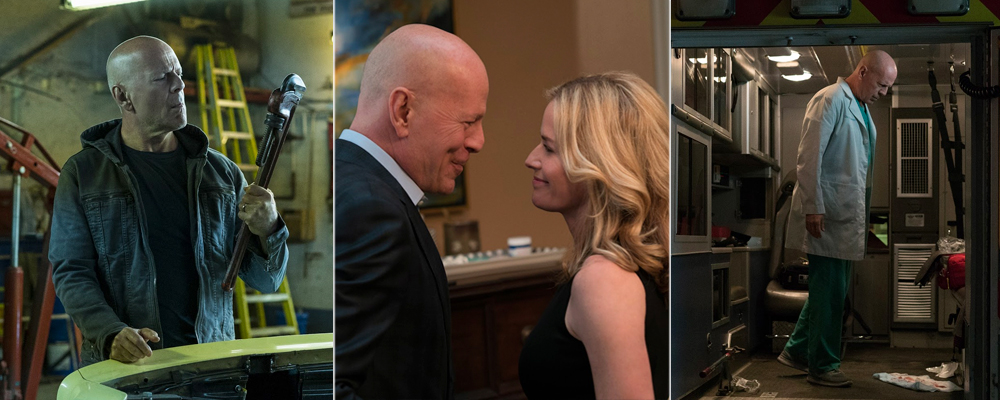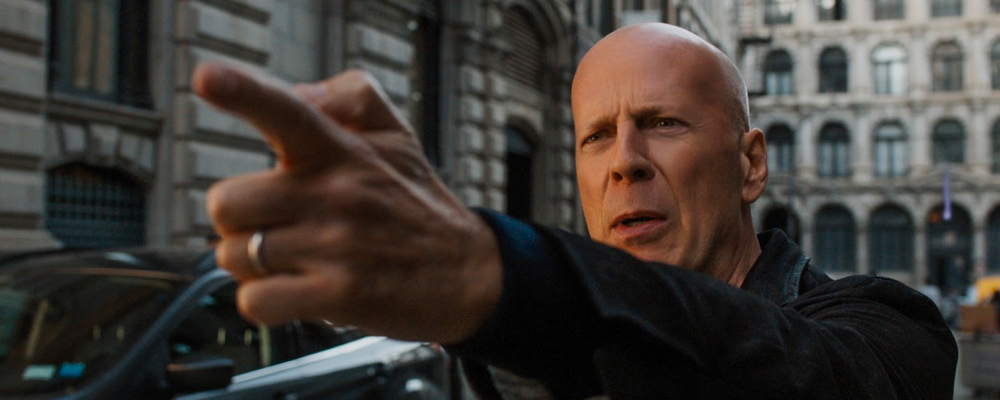‘Death Wish’ Is a Blend of Pulpy Action and Gritty Violence
Aaron Berke
According to “Death Wish,” gun-toting vigilantism is the best solution for grief. Bruce Willis stars in this remake of the 1974 Charles Bronson pulp classic, which sees a man hell-bent on justice after the murder of his wife and lethal injury of his daughter. The plot of the remake is pretty much the same, but it features a bizarre tonal listlessness. The film attempts to combine a gritty revenge thriller with a mainstream super hero origin story. The result is a movie that lacks identity and tries to create a hero who it’s impossible to root for.
Paul Kersey (Willis) is a practicing medical surgeon, and he’s about to celebrate his birthday with his wife, Lucy (Elisabeth Shue) and his daughter, Jordan (Camila Morrone) when he’s called in to work. While he’s gone, three armed robbers break into Kersey’s home. A struggle commences, and they murder Lucy and leave Jordan critically injured. With Jordan in a coma, the grieving Paul has only a supportive brother (Vincent D’Onofrio) and the promises of Detective Kevin Nairy (Dean Norris) that the killers will be brought to justice. But nothing happens. So Paul decides to take action. Arming himself with guns, zipping up his hoodie, and keeping his medical kit handy, Paul re-emerges as a silent vigilante whom the press dubs The Grim Reaper. He leaves a lot of blood, bullets and bodies in his wake.
The sight of Bruce Willis skulking around in the dead of night wearing an identity-concealing hoodie creates immediate associations with his character from “Unbreakable.” In that film, Willis plays a security guard with unbreakable bones who becomes a super hero. At times, it feels like “Death Wish” is trying to turn him into the exact same character. Except he’s traded his super powers for dual pistols. Instead of using his weapons for defense, Paul murders thugs, criminals and drug dealers left and right. And we’re meant to cheer. This works in a gritty revenge film. It does not work in a super hero film. Director Eli Roth wants to have his cake and eat it too.
The original “Death Wish” was not exactly smart entertainment. It was, at least, tonally consistent. It was about a man who has nothing to live for, and just wants to put bullets in heads to make himself feel better. The Charles Bronson version of Paul came off as someone who’s totally ready to die as long as he can take a few dozen thugs with him. This fatalistic quality is utterly absent from Willis’ Paul. His daughter’s in a coma, but still alive and recovering. He has a dedicated and caring brother. He even has a therapist. Paul not only has something to live for, he’s actively trying to get his life back together. The title “Death Wish” doesn’t make any sense.
In the absence of the original film’s gritty nihilism, Eli Roth needs to create something to motivate the action. He opts for mainstream appeal. When Paul kills his first set of bad guys, a couple of passers-by capture the action and upload the videos to social media. Paul becomes a media sensation as a result. Utilizing montages which feature the videos of Paul combined with different media commentators declaring him a force for justice, the film morphs him from an anti-hero into an outright hero. Paul digs the coverage, and even embraces his new comic book-style alias, The Grim Reaper. As Roth alters Paul’s murders into crowd-pleasing strikes of justice, the whole film takes on a much lighter tone.
This includes purely comic relief characters like Detective Raines, who Dean Norris plays like a knock-off of his “Breaking Bad” DEA agent. Detective Raines is frequently seen forcing himself to choke down a health food bar, or greedily snatching the last slice of pizza. Such moments make a mockery of the police and suggest that the film isn’t taking itself seriously. But this is the same film that began with a wife’s murder, a daughter’s lethal injury, and a husband’s devastating loss. Yet even Willis seems to want to skip through the serious bits. Willis has never exactly been known for his dramatic acting, but he’s usually believable when he’s trying to convey sadness. The scene immediately after his wife’s death features a supposedly grief-stricken Paul talking to the cops. As he describes the night of her death in a flat monotone, Willis gives a show of blinking back invisible tears, scrunching his face into a laughably unconvincing display of anguish.
Willis sleep walks through most of the role, but he ironically comes alive whenever he has a gun in his hand. Maybe it’s the good old “Die Hard” days coming back to him. There’s a distinctive satisfied gleam in his eye whenever he’s wielding a lethal weapon. Willis looks most at home when he’s pumping bad guys full of lead, and there’s an undeniable thrill in watching Willis do what he does best. Many of his kill scenes are engaging and well-crafted. But even the capacity to lose oneself in mindless entertainment is halted by the film’s tonal flip-flopping. It’s impossible to root for Paul as a justice-seeking vigilante, because what he’s doing is so clearly not justice. It’s revenge, just like in the original “Death Wish.” The remake just can’t tell the difference.
Despite what Roth and screenwriter Joe Carnahan want you to believe, a murderer is not a hero. “Death Wish” ultimately is the kind of movie that precisely fits into Roth’s and Carnahan’s wheelhouse; blood-soaked, pulpy entertainment. But in trying to move its sensibilities closer to the mainstream super hero crowd, it squandered its potential to engage. Instead, “Death Wish” sits in an awkward middle ground, neither super hero movie nor revenge tale. Somewhere along the way, the remake forgot what story it was trying to tell. It’s probably buried beneath a pile of bodies.
“Death Wish” opens March 2 in theaters nationwide.

